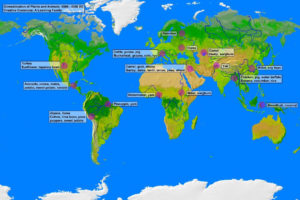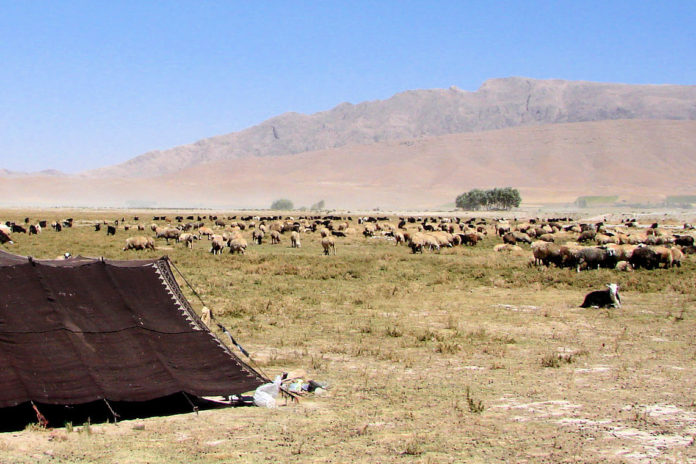The first agricultural revolution began 10,000 years ago in the Middle East. The revolution changed in how humans lived. Humans were nomadic hunters and gatherers before the revolution. However, the agricultural revolution changed humans into sedentary farmers. These farming settlements produced domesticated plants and animals.
Causes and Effects of the Agricultural Revolution
Climate Changes

The last Ice Age ended 10,000 years ago. The change in the climate saw an increase in the world’s population. The hunting and gathering lifestyle was not able to support that growth. New methods of food production were necessary.
The ice sheets began to melt. The climate became warmer and more moist. The environment supported more grasses suitable for food. At first, humans simply harvested the grasses for food. But over time, humans began to select the most desirable grasses for cultivation. Humans began to care for, cultivate, and breed selected plants and animals.
The agricultural revolution first appears in the Middle East. However, the revolution appears in other places around the world.
Population Pressures
One result of a warmer Earth is an increase in the food. However, hunting and gathering could not keep up with its population growth. The shift to an agriculture saw an increase in food production. However, that also caused additional population growth. Pressure for improved food production appeared. Human societies began to adapt to this requirement.
Irrigation: In the Middle East, humans began to build canals and dams. This enabled them to farm arid lands to increase food production.
Plough: The Middle East developed the plough in 4000 BC. The plough required the use of domesticated animals. The plough increased the amount of land that could be cultivated. Animals began to replace humans as the source of labor to produce food.
Migration: Migration into new lands was another response to population growth. For example, the agricultural revolution spread rapidly from the Middle East into Europe.
Transformation of Human Society
As populations grew and new technologies were created, human societies changed a great deal.
Sedentary: Agricultural societies are sedentary. Humans are now settled in one location. The nomadic lifestyle began to disappear.
New Industry: Agricultural societies became more diverse. Not everyone was a farmer. New types of workers appeared. This included artisans, merchants, and other labor specialties. These workers produced non-agricultural products such as pottery and jewelry. They also provided new services such as merchants and grain storage. Overall, these new workers made possible the growth of new industries.
Social Classes: Social classes began to appear. The new classes could better manage a complex society. For example, construction of irrigation systems required a higher level of social coordination. Elite ruling classes began to appear. They could coordinate work. However, they also represented new centers of wealth and power.
The foundation is now laid for the rise of civilizations.
Reflections
Vocabulary
- agricultural revolution
- nomadic
- sedentary
Notes
- The Agricultural Revolution begins with the domestication of plants and animals.
- Domestication of plants and animals occurs around the world.
- Small agricultural societies grow larger and more complex and leads to the rise of civilizations.
Bibliography

